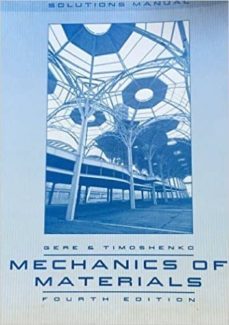Imprescindibles
Ficción
No Ficción
Ciencias y tecnología Biología Ciencias Ciencias naturales Divulgación científica Informática Ingeniería Matemáticas Medicina Salud y dietas Filología Biblioteconomía Estudios filológicos Estudios lingüísticos Estudios literarios Historia y crítica de la Literatura
Humanidades Autoayuda y espiritualidad Ciencias humanas Derecho Economía y Empresa Psicología y Pedagogía Filosofía Sociología Historia Arqueología Biografías Historia de España Historia Universal Historia por países
Infantil
Juvenil
#Jóvenes lectores Narrativa juvenil Clásicos adaptados Libros Wattpad Libros Booktok Libros de influencers Libros de Youtubers Libros Spicy Juveniles Libros LGTBIQ+ Temas sociales Libros ciencia ficción Libros de acción y aventura Cómic y manga juvenil Cómic juvenil Manga Shonen Manga Shojo Autores destacados Jennifer L. Armentrout Eloy Moreno Nerea Llanes Hannah Nicole Maehrer
Libros de fantasía Cozy Fantasy Dark academia Hadas y Fae Romantasy Royal Fantasy Urban Fantasy Vampiros y hombres lobo Otros Misterio y terror Cozy mistery Policiaca Spooky Terror Thriller y suspense Otros
Libros románticos y de amor Dark Romance Clean Romance Cowboy Romance Mafia y amor Romance dramatico Romcom libros Sport Romance Otros Clichés Enemies to Lovers Friends to Lovers Hermanastros Slow Burn Fake Dating Triángulo amoroso
Cómic y manga
Novela gráfica Novela gráfica americana Novela gráfica europea Novela gráfica de otros países Personajes, series y sagas Series y sagas Star Wars Superhéroes Cómics DC Cómics Marvel Cómics otros superhéroes Cómics Valiant
eBooks
Literatura Contemporánea Narrativa fantástica Novela de ciencia ficción Novela de terror Novela histórica Novela negra Novela romántica y erótica Juvenil Más de 13 años Más de 15 años Infantil eBooks infantiles
Humanidades Autoayuda y espiritualidad Ciencias humanas Economía y Empresa Psicología y Pedagogía Filosofía Historia Historia de España Historia Universal Arte Cine Música Historia del arte
Ciencia y tecnología Ciencias naturales Divulgación científica Medicina Salud y dietas Filología Estudios lingüísticos Estudios literarios Historia y crítica de la Literatura Estilo de vida Cocina Guías de viaje Ocio y deportes
STEPHEN P. TIMOSHENKO
Recibe novedades de STEPHEN P. TIMOSHENKO directamente en tu email
Filtros
Del 1 al 6 de 6
CHAPMAN & HALL LTD 9780412430909
This manual accompanies the main text of the 3rd edition of Gere and Timoshenko's "Mechanics of Materials". Fully worked solutions are given to over 1000 problems. This book should be of interest to user of the main text of "Mechanics of Materials".
Ver más
Tapa blanda
DOVER 9780486472072
The best available guide to the elastic stability of large structures, this book introduces the principles and theory of structural stability. It was co-authored by the father of modern engineering mechanics, Stephen Timoshenko, and James Gere, who updated the materials and worked closely with Dr. Timoshenko. Relevant to aspects of civil, mechanical, and aerospace engineering, this classic covers the essentials of static and dynamic instabilities.Topics range from theoretical explanations of 2- and 3-D stress and strain to practical applications such as torsion, bending, thermal stress, and wave propagation through solids. Additional subjects include beam columns, curved bars and arches, buckling of rings, and experiments and design formulas. Particularly suitable for advanced undergraduate and graduate students of engineering, this volume is also an indispensable reference for professionals.
Ver más
Tapa blanda
EDICIONES PARANINFO, S.A. 9789687529394
Este es un texto clásico que se ha convertido en un estándar para cursos de mecánica y fuerza de materiales. La 4a edición ha sido totalmente revisada, incluyendo más detalles en las explicaciones de texto y ejemplos más trabajados, una secuencia de materias más natural y lógica, ilustraciones mejoradas, etc
Ver más
Tapa blanda
URMO, S.A. DE EDICIONES 9788431402310
Tapa blanda
DOVER 9780486611877
Strength of materials is that branch of engineering concerned with the deformation and disruption of solids when forces other than changes in position or equilibrium are acting upon them. The development of our understanding of the strength of materials has enabled engineers to establish the forces which can safely be imposed on structure or components, or to choose materials appropriate to the necessary dimensions of structures and components which have to withstand given loads without suffering effects deleterious to their proper functioning.This excellent historical survey of the strength of materials with many references to the theories of elasticity and structures is based on an extensive series of lectures delivered by the author at Stanford University, Palo Alto, California. Timoshenko explores the early roots of the discipline from the great monuments and pyramids of ancient Egypt through the temples, roads, and fortifications of ancient Greece and Rome. The author fixes the formal beginning of the modern science of the strength of materials with the publications of Galileo's book, "Two Sciences," and traces the rise and development as well as industrial and commercial applications of the fledgling science from the seventeenth century through the twentieth century.Timoshenko fleshes out the bare bones of mathematical theory with lucid demonstrations of important equations and brief biographies of highly influential mathematicians, including: Euler, Lagrange, Navier, Thomas Young, Saint-Venant, Franz Neumann, Maxwell, Kelvin, Rayleigh, Klein, Prandtl, and many others. These theories, equations, and biographies are further enhanced by clear discussions of the development of engineering and engineering education in Italy, France, Germany, England, and elsewhere. 245 figures.
Ver más
Tapa blanda
Del 1 al 6 de 6

![harry potter y el cáliz de fuego (harry potter [ediciones ilustra das interactivas] 4)-j.k. rowling-9788419868497](https://imagessl7.casadellibro.com/a/l/s5/97/9788419868497.webp)



























